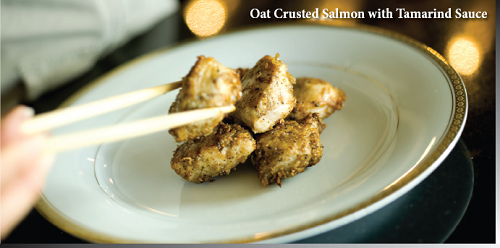

SPLIT APPLE RETREAT – YOUR PERFECT ESCAPE

New Zealand’s Split Apple Retreat is unlike anything you’ve ever visited before. A quiet, luxurious hideaway built high into a cliff-face right on the ocean, a few minutes away from the South Island’s stunning Abel Tasman National Park, it offers both every indulgence as well as the additional promise of exceptional good health.
The Retreat’s gourmet menu is individually drawn up for guests to take into account any dislikes and favourites, as well as dietary requirements, but is then designed to deliver optimal health benefits in a series of fresh, delicious, gourmet dishes. While you treat your tastebuds, relax in the knowledge that as well as doing your body a favour, it’s odds-on you’ll be leaving lighter than you arrive.
There’s also every opportunity at the Retreat to relax and pamper yourself with pristine surrounds, a saltwater pool on the deck, a spa and sauna, private access to beaches, massage, pilates, personal trainer, acupuncture, meditation guidance and other stress-reduction therapies. Close by is some of the best bushwalking in New Zealand, as well as secluded beaches, sea-kayaking and a helicopter service for drop-off at even more isolated spots.
Split Apple Retreat emphasizes understated Japanese-style quiet elegance and attention to detail.
Using the natural materials of wood, stone, and granite and featuring all original antiques and works of art, the Retreat is the ideal place to de-stress, relax and rejuvenate in absolute luxury and exclusivity. Swim in the saltwater infinity pool, enjoy the Japanese onsen-style spa, steam room, or infrared sauna. A gentle path leads to a secluded beach at the bottom of the property and water taxis will pick you up from Split Apple Rock Beach for lovely walks in different parts of the breathtaking Abel Tasman National Park located on our doorstep. Wellness counselling with Lee or cooking lessons with Pen can be readily arranged.
There are lots of activities available including fishing, sailing, kayaking, tramping, sky diving, bird watching, and swimming with the seals (not to be missed). Dolphin and penguin sightings are common.
There is no noise pollution at Split Apple Retreat – only the sounds of the birds and the sea. When combined with the gourmet thoughtful food with every ingredient imparting a benefit to health, you have the perfect environment for peace and rejuvenation in the most luxurious environment.
195 Tokongawa Drive
RD2 Motueka
Tasman 7197, New Zealand
Ph: +64 3 527 8377
Fax: +64 3 527 8644


We’ve all been brought up to believe that there’s no gain where there’s no pain, and food was never any different. To eat healthily was about going without; denying ourselves the foods we love and replacing them with tiny portions of the tasteless, the unappetising and the dull.
But with a growing interest around the world in the link between food and well-being, and with epidemics of obesity, diabetes and general ill-health, the good news is that food can be both healthful and delicious.
Finally, here is a cookbook that proves it. Here we present dozens of recipes that are tasty, filling and also nutritious; the kind of food you’ll choose because you’ll love it, not just because it’s doing you good. Fabulous food can contribute to good health, fight ageing, guarantee weight loss, combat stress, crank up energy levels and promote longevity, if thoughtfully selected and prepared. And the proof, as they say, is in the pudding (and the rest of the meal).
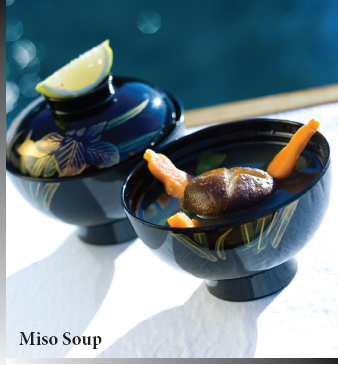
So what is healthy food? And does what you eat really make that much difference to your health?
Consider this: The USA’s National Cancer Institute attributes more than one-third of all cancers to dietary factors. One-third! That’s an incredible statistic.
So in the light of that, are you ready to take what you put on your plate seriously? Let us make it easy for you.
The Thoughtful Food Cookbook is a collection of enticing and easy-to-cook dishes that we’ve refined over the years at our beautiful Split Apple Health Retreat in New Zealand. They look great, taste delicious and will leave you feeling the best you ever have.
They range from long-time family favourites – with a healthy twist – to exciting, new dishes that will inspire you to step out of your kitchen comfort zone and into a new world of flavoursome food that’s doing you good.
This is about food that’s going to make you better equipped to cope with what the world, your age and what your genes throw at you.
To make it easier, we divide food into three categories: Good, Bad and Indifferent. Bad food might taste good but actively does you harm.
Indifferent food won’t do you much harm but it won’t do you much good either and it stops you eating the stuff that is good for you. And then there’s the good food – the superfoods – that actively promote health and wellness and taste great too.
All those ideas about eating well – both in terms of health and sheer pleasure – have been brought together here, between the pages of this book.
It’s about “wellness” and, to us, that’s all about being in the best physical shape you can be while eating and drinking thoughtful food that’s a true pleasure rather than a chore.
The Concept
Many healthy eating plans are about self-denial, telling you all the things you can’t eat and all the sacrifices you’ll have to make. But eating bland meals served in starvation-sized portions is no basis for long-term, life-changing food habits.
The concept of ‘no pain, no gain’ has no place in the kitchen. Here at Split Apple, we believe that the most effective way to persuade people to eat healthy food is to make the dishes delicious and appealing.
Combining the talents of a qualified physician, who has done years of research into the medical benefits of food, and a trained chef with a knack for combining Eastern and Western food styles and ingredients, The Thoughtful Food Cookbook starts with the flavours and textures you already enjoy and then builds on them.
Naturally, we’re going to tell you about some food you shouldn’t eat and others that you definitely should, but every time we remove one of your favourite flavours we’re going to replace it with something that tastes just as good, if not better.

And you’ll be surprised at some of the ‘guilty pleasures’ that you don’t need to give up. Do you have a weakness for red wine, chocolate or coffee? We’ll show you how they can do you more good than harm and why you don’t need to deny yourself to become healthy.
The recipes presented in this book are not only designed to help you live longer, and with a better quality of life, they promise a tantalising blend of flavours and textures that will delight your taste buds.
This might be a life-changing book but it couldn’t be easier to follow. The book is laid out with pictures of each of the dishes alongside recipes that show you how to create them for yourself. Then, if you really want to know more, you can discover the nutritional benefits of each dish, right there on the page.
We recognise that everyone is different and that one-size-fits-all diets don’t actually work for most people. So we’ve developed a simple code, applied to every dish, that will let you know the specific health benefits each of them will give you. That way, you can focus on the ones that will do you, personally, most good.
And if you want to branch out and create your own dishes, we explain the science behind every ingredient. You will be amazed at how many bad things we put into our bodies just because they’re more convenient, and how many truly beneficial foods we miss out on for no good reason.
Use this book the way that suits you best. Read up on the science and statistics before you set foot in the kitchen or skip to the recipes and get cooking.
Enjoy the food and then, if you want to know why you feel so much healthier, you can always come back here and learn more.
Why This Cookbook is different
Lee Nelson
In 1997 I was diagnosed with a moderately aggressive form of prostate cancer. As a physician, I went to the medical literature and thoroughly researched the disease, studying more than 2000 medical papers. From my research it became clear that the optimal treatment path was to combine both traditional and complementary medical approaches.
I was surprised, however, by the wealth of medical studies that had been done on food and supplements, and included many of these as part of my overall treatment plan. Now, 14 years later, I am free from cancer but my interest in nutraceuticals (foods that help promote wellness and longevity) has not waned, and I keep up with the medical literature on new developments. I wrote a book called Prostate Cancer Prevention and Cure to help non-medical men get through the maze of treatment options as well as complementary therapies for dealing with prostate cancer.


I founded and run, with my wife Anne Pen Lee, Split Apple Retreat, a boutique hotel dedicated to good health, relaxation and indulgent luxury, just outside Nelson, New Zealand.
Pen is the chef at the Split Apple Retreat, and incorporates the latest developments in food science into new, mouth-watering dishes that are featured at the retreat.
It is our absolute pleasure to share these with you in our cookbook.
The Science
Sometimes it seems like half the world is starving while the other half is eating itself to death, literally, with so many people in developed countries suffering from health issues associated with obesity, diabetes, cancers and a range of other ailments, much of it either caused, or contributed to, by poor food choices.
The answer, you’ll be glad to hear, isn’t doleful bowlfuls of bland, inedible mush. The Thoughtful Food Cookbook, takes real food – tasty food – and looks at the science of what it does to our bodies to promote health and longevity.
For a start, most of our recipes use low glycemic index (GI) foods that stabilise blood sugar levels and reduce cravings (more on that later). Also, foods that are known to decrease inflammation, a common factor in virtually all degenerative diseases such as cancers, are to the fore.
When those two basic principles are understood – embracing low-GI and anti-inflammatory food – it becomes easy to create mouth-watering dishes that promote health, control weight, reduce cravings, increase energy levels and possess powerful antiageing properties.

Each day the human body is confronted with environmental stress. This comes from both internally and externally produced toxins, oxidative stress (which causes cell damage) and foods that result in hormonal changes, increasing weight and promoting inflammation throughout the body.
Our meals provide nutrients that reduce or even reverse these destructive processes, help control weight – much more on that later – reduce sick days and make you more alert, focussed and productive when you are at work.
As you’ll discover, all the science of healthy eating is interconnected, and even if we know what we should eat, for instance, low-GI foods, many of us don’t really know why or, indeed, what they are. And what we also don’t realise is that an imbalance caused by one problem can trigger a whole other set of health issues.
So let’s break this down, starting with the big one, the hidden killer and the one you rarely ever hear about – inflammation.
Inflammation
Inflammation is the normal body response to acute injury or infection and is what causes a cut or infection to become red and swollen. As we heal it goes away. So far, so simple.
But recent research shows that chronic inflammation can develop throughout our bodies and is at the heart of virtually every debilitating disease, including cancer, Alzheimer’s, heart disease, diabetes, strokes, and arthritis.
So what causes it? Well, it’s all linked to the same processes that mess with your blood sugar when you don’t eat the right food (or too much of the wrong stuff).
This is how it works. Carbohydrates are broken down into glucose, some easier than others. How rapidly a food raises your blood sugar can be quantified by an index known as the glycemic index, or GI index (more on this later). What happens when you eat food that has a high GI is that you get a spike in blood sugar followed by the release of insulin to deal with it, and that leads to a crash in alertness and focus.
Over time, a resistance to insulin develops and that leads to higher base levels of blood sugar and insulin, increasing the extremes of the sugar/insulin relationship - you get bigger sugar highs and deeper insulin lows.
That’s a big enough issue in itself – you will end up feeding your sugar addiction and, as a result, slamming on the extra pounds – but elevated blood sugar and insulin levels are also closely linked to increased inflammation.
And it gets worse. Sugar is converted to fat and fat deposits work like a gland releasing more pro-inflammatory substances, adding fuel to inflammation’s fire.
But help is at hand - the food fire fighters are on their way.
We need to reduce chronic inflammation as much as possible and nutritional science has now identified a number of anti-inflammatory foods and supplements we should be consuming, as well as some pro-inflammatory foods that we really need to avoid.
Thoughtful foods tackle all of these problems and reduce inflammation directly and combat weight gain, an indirect source of inflammation. And it’s not about self-denial, starvation and boring food.
In fact, a 2004 article in the British Medical Journal postulated an anti-inflammatory “polymeal” that if eaten daily would reduce the risk of cardiovascular disease by 76% based on a meta-analysis of data from the Framingham Heart Study. This diet comprised half a glass of red wine, almonds, garlic, about a pound (450grams) of fruits and vegetables and 100 grams of dark chocolate (at least 70% cocoa and no milk) every day as well as fish four times per week.
The study reported that overall life expectancy for men on average would be increased by 6.6 years and freedom from cardiovascular disease would be increased by an extra 9 years! The corresponding figures for women were 4.8 and 8.1 years respectively.
Adding key foods to this diet, such as pomegranates, blueberries, green tea, olive oil, fermented soy products, turmeric (curcumin), and cinnamon, would likely have an even greater effect on life expectancy.
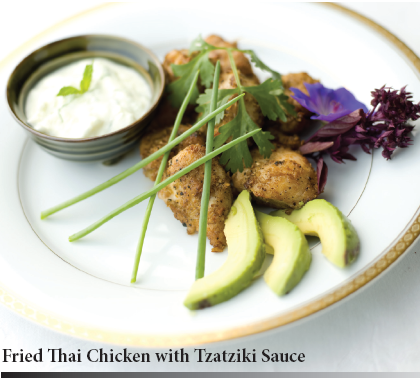
How do I know if I have inflammation?
Inflammation can be monitored by a blood test called High sensitivity C-reactive protein (hs- CRP). This is an accurate measure of inflammation. Unless you have an infection, ideally your CRP should be less than 1.0. Higher levels are indications of chronic inflammation somewhere in the body.
OK, so what can I do about it?
Avoid saturated fat and high GI carbs, both of which increase inflammation and CRP. Diets low in saturated fats decreased CRP by 39% in just eight weeks. Reducing meat and dairy consumption reduces the amount of saturated fats. Also avoid fried foods, especially deep-fried in polyunsaturated oils or lard, and packaged goods with partially hydrogenated oils. Fresh is best.

Eat cholesterol-lowering foods like almonds, lentils, beans, turmeric, pomegranates, fermented soy proteins, olive oil, berries, green leafy vegetables and chocolate (non-dairy; minimum 70% cocoa). This has comparable effects to a statin drug (like Lipitor) on both LDL-cholesterol and CRP.
Foods that Fight Inflammation
OK, it’s time to go to your pantry and fridge and see what lifesavers you already have in stock - and take a pen and paper to make a shopping list for those that aren’t there.
VEGETABLES
-Hot Chillis (Potent anti-inflammatory properties)
-Crucifers (Broccoli, Cauliflower, Brussels sprouts, Pak Choi, Arugula)
-Spinach
-Shiitake Mushrooms
-Parsley
-Garlic
-Onions
-Ginger
-Sea Vegetables (Kelp)
FRUIT
-Pomegranates
-Avocados
-Blueberries (and other berries)
-Papaya
-Cherries
-Grapefruit
SPICES
-Turmeric (Curcumin)
-Cinnamon
-Clove
NUTS
-Macadamia nuts
-Walnuts
-Almonds
OILY FISH
-Wild Salmon
-Sardines
-Mackarel
-Patagonian tooth fish (aka Chilean Sea Bass)
-White Wharehou (from the Southern Ocean)
OTHER
-Extra-virgin olive oil
-Green tea
-Red wine
-Gotu Kola (aka Asiatic Pennywort)
-Soy (especially fermented soy-miso, natto, tempeh)

What about supplements?
There are many supplements that actively lower inflammation, either directly or indirectly, and they include one of the most readily available of them all - Vitamin C. 1000 mg of vitamin C per day can decreases CRP by one-third. In a University of California Berkeley study, participants with CRP of 2.00, or greater, who consumed 1000 mg of vitamin C daily, reduced their CRP by 34%.
Other supplements include:
| Curcumin | – 400 mg/day |
| Fishoil | – 1000 mg twice daily |
| Vitamin K2 | – 1000 mg/day |
| Acetyl-L-carnitine | – 500 mg twice daily |
| Coenzyme Q-10 | – 50 mg twice daily |
| Green tea and black tea | – 4-10 cups per day |
Borage oil or evening primrose oil
(gamma-linolenic acid)
African Mango Irvingia – Irvingia increases leptin sensitivity. Leptin decreases hunger signals to the brain, and that decreases food intake. Irvingia also increases adiponectin, a hormone secreted by fat cells that increases insulin sensitivity. Adiponectin has anti-inflammatory effects as well.
| Lutein | – 150mg twice daily |
| Vitamin D | – 1000 IU twice daily |
FOR A HEALTHY HEART ADD
D-ribose – 5 gms/day; magnesium 400 mg/day
Oxidative stress
Another issue in maintaining a healthy diet is oxidative stress.
Oxidative stress is an imbalance between the production and manifestation of reactive oxygen species (ROS) and your ability to readily detoxify or repair the resulting damage.
Reactive oxygen species are highly chemically-reactive molecules containing oxygen. ROS form as natural by-products of the normal metabolism of oxygen and have important roles in keeping your body running smoothly.
However, you can have too much of a good thing and increases in ROS levels can result in significant damage to cell structures, leading to oxidative stress.
Oxidative stress is involved in many diseases, including Sickle Cell Disease, atherosclerosis, Parkinson’s disease, heart failure, myocardial infarction, Alzheimer’s disease, Bipolar disorder, fragile X syndrome and chronic fatigue syndrome.

That said, at the right levels, ROS can be beneficial, as they are used by the immune system as a way to attack and kill pathogens.
Vitamin D
Although not directly related to diet, getting enough vitamin D is so critical to wellness that it deserves a brief mention. Over half the population has low vitamin D levels and low levels of this essential vitamin are associated with an increased risk of cancer, heart disease, Altzheimers, strokes and osteoporosis.
Seniors with the lowest levels of Vitamin D are 60% more likely to have substantial declines in memory than seniors with the highest levels. Maintaining optimal vitamin-D levels require either exposure to unprotected sunlight or supplements. Vitamin D supplements are inexpensive and readily available.
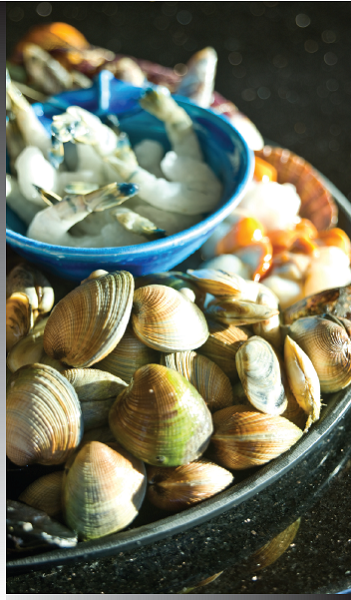
The proper daily dose varies from person to person, since absorption varies widely. Start with 1000 IU daily and monitor your blood level in conjunction with your health professional.
Good and Bad Carbs
Carbohydrates aren’t all bad - in fact they are an essential part of a healthy diet. But carbs come in many forms and not all are beneficial. Fruits and vegetables are rich in good carbs and should be liberally consumed. Carbs from processed foods, on the other hand, are counterproductive and should be avoided.
Carbohydrates can be categorized by how rapidly they are broken down into glucose and raise your blood sugar. An index known as the glycemic index (GI) quantifies this.
Ah, the GI thing again.
Over the past few years, GI has received lots of news coverage and you often see foods being promoted as low GI. But what’s the big deal and is it really that important?
GI is a measure of the effect of a carbohydrate on blood sugar (remember we talked about the sugar spike and insulin ‘crash’?) The higher the GI, the more rapid the rise in blood sugar after eating and the sooner you crash and crave more carbs.
To establish a benchmark for GI, scientists defined glucose as having a GI of 100 and everything else is measured against that. A GI of 55 or less is considered to be a low GI food.
OK, but why is high GI a bad thing?
The higher the GI the more insulin required to process it. Long term consumption of high GI foods and simple sugars results in a gradual resistance to insulin and this is the start of the slippery slope that leads to diabetes, obesity and heart disease.
As you continue to consume high GI food, more and more insulin is necessary which puts a burden on the pancreas, the organ which produces it. Over time, blood sugar and insulin levels rise and that triggers a whole raft of unwanted side effects.
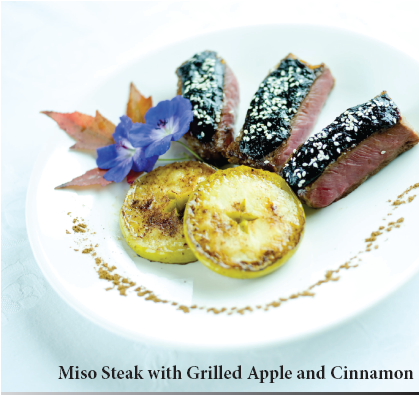
For instance, insulin converts excess sugar into fat - so there goes your weight-loss program. Also, insulin stimulates chronic inflammation, and we know we don’t want that.
Resistance to insulin can eventually result in a condition called ‘metabolic syndrome’ which dramatically increases the risk of type-2 diabetes, heart disease and stroke.
How can I tell if I have metabolic syndrome?
Metabolic syndrome is at almost epidemic levels in the United States. Nearly a quarter of the population has it and more than 40% of people over 60 years of age. Metabolic syndrome is defined as ticking three, or more, of the following boxes:
•Blood pressure in excess of 130/85
•Fasting blood sugar of 110mg/dL or higher
•Waist diameter of 40 inches (102cm) or more for men and 35 inches (90cm) or more for women.
•HDL cholesterol of less than 40mg/dL (men) or less than 50mg/dL (women)
•Triglycerides of 150mg/dL or higher
Does this sound like you? The good news is that metabolic syndrome can be reversed by conscientiously consuming low GI foods. And if you don’t have it, start eating low GI foods now and you won’t get it.
Low GI Foods
Low GI foods reduce cravings, reduce weight and reduce inflammation, resulting in you looking and feeling the best you can! All the recipes in this cookbook feature low GI ingredients.

Here are some typical examples:
-Apricots-20
-Cherries-23
-Plums-23
-Grapefruit-26
-Prune-29
-Peaches-30
-Strawberries-32
-Figs-35
-Dried Apricot-35
-Apple-40
-Orange-40
-Pears-45
-Grapes-50
-Xylitol-8
-Spaghetti Squash-20
-Summer Squash-15
-Watercress-20
-Courgette -15
-Buckwheat-51
-Barley-43
-Soba Noodles-46
-Brown Rice -50
-Quinoa-35
-Yogurt-36
-Lentils-29
-Chickpeas-28
-Almonds-0
-Brazil Nuts-0
-Pecan Nuts-0
-Cashew Nuts-22
-Macadamia Nuts-0
-Peanuts-14
-Black Rice-42
-Dark Chocolate (70%)-22
-Soy beans-15
-Vegetables (Spinach, Silverbeet, Kale)-15
-Oatmeal (steel Cut)-40
-Kumera (Sweet Potato)-50
-Cauliflower-15
-Broccoli-15
-Blueberries-40
-Raspberries-40
-Lettuce-15
-Radishes-15
-Cinnamon-0
-Avocado- Less than 15
-Egg whites-0
-Whole eggs-0

Wonderfoods and Blunderfoods
Some foods are so beneficial in many ways that we call them superfoods or wonderfoods and you should try to eat them as often as you can.
They include:
-Pomegranates
-Blueberries
-Wild Salmon
-Green Tea
Other slightly less exotic options should be part of your regular diet. They include:
-Garlic
-Chocolate (minimum 70% cocoa)
-Red wine (a half to two glasses/day OK; minimum of three glasses/week)
-Cruciferous vegetables – broccoli, cauliflower, kale, arugula (rocket), cabbage, Brussels sprouts, etc
-Cinnamon
-Alkaline water
-Green leafy vegetables – spinach, silverbeet
-Fish and shell fish
-Fermented soy – miso, tempeh, natto
-Nuts – almonds, macadamia, walnuts
-Extra virgin olive oil
-Egg whites
-Fruits
-Cooked tomatoes
And then there are the foods that you can eat occasionally ...
-Coconut & extra virgin coconut oil (good for high heat cooking)
-Grass-fed beef, venison, lamb
-Egg yolks
-Free-range white meat chicken or turkey (no skin)
-Coffee (1-2 cups/day) but more if you have no problems with blood pressure, heart palpitations or nervousness, or if you drink decaf. By the way, decaffeinated coffee seems to have the same anti-cancer benefits as the full octane variety.
OK, so what are the ‘blunderfoods’?
Let’s remember what our objectives are, here. We want to remove high GI foods and replace them with low GI foods. Plus we want to add foods with high antioxidant content to deal with free radicals and reduce oxidative stress.
Free radicals are atoms with unpaired electrons which, in the body, start looking for molecules to pair with and can start a chain reaction that leads to cell damage. That in turn can promote anything from premature ageing to cancer. Antioxidants are molecules that can safely interact with free radicals and stop the chain reaction before vital molecules are damaged.
With all that in mind, refined carbohydrates should be nixed, as should foods that are known to increase inflammation. Arachadonic acid (AA) is an inflammatory substance found in red meat, egg yolks, and milk fats. Reducing AA levels helps reduce inflammation.
Give a wide berth to breads made with refined flour, pasta, rice (except black rice and basmati), potatoes, pastries, added sugars, soft drinks and whole milk products. Egg yolks are only OK in small amounts.
Also avoid foods deep-fried in bad oils, canned foods, packaged foods and non-organically grown foods (whenever possible).
Steer clear of salted and pickled foods, canola oil and polyunsaturated oils such as sunflower, safflower, corn, and soybean oils.
The most important meal of the day
We have been brought up with the idea that cereal for breakfast is healthy. Indeed, the breakfast cereal market is huge with companies reaping gross profits of 40-45%! The biggest thing they have going for them is convenience- easy to dish up, douse with milk and serve.
No mess, no fuss. But are these ubiquitous flakes, granules and kernels good for you? That’s certainly the way they are marketed.
For the moment let’s leave the issue of gluten intolerance aside, although most breakfast cereals contain lots of gluten. It’s the high glycemic index in most popular cereals that we find worrying.
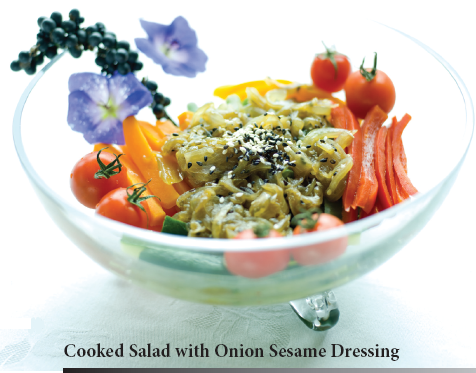
All Bran and muesli are the exceptions. By making your own muesli, as we do at Split Apple Retreat, you can select low GI ingredients such as steel-cut oats, nuts, and coconut.
Here are the Glycemic Indexes of various popular cereals, and remember that anything below 55 is what we consider low and therefore good GI:
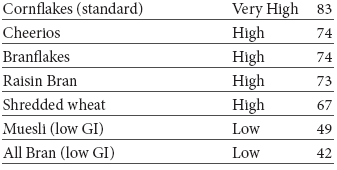
The saying that breakfast is the most important meal of the day is no exaggeration. Start your day off with a rapid rise in blood sugar that leads to a surge of insulin and you’re already off and running on a sugar rollercoaster ride. Grab a burger, fries and a Coke for lunch and you are off to the metabolic races.

As your blood sugar crashes, your body will tell you that you need some sugar- maybe another soft drink or a candy bar. Is it any wonder that an astounding 68% of adult Americans are either overweight or obese?
So what is healthier than high GI breakfast cereal?
Try these:
A bowl of blueberries (GI=40) with a high probiotic yogurt (GI 34) and sprinkled with low GI homemade muesli.
An egg white omelette with avocado, tomato, spinach, mushrooms, onions, garlic and parsley. (GI less than 15)
On the sweeter side, opt for blueberry-coconut buckwheat pancakes. (GI 40)
How about a slice of toast?
“Designer” bread has acquired an image of “healthiness” - it’s multi-grain this and wholewheat that - but how does it stack up when the GI is measured?
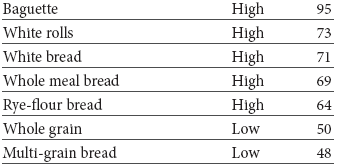
That’s one of the reasons we don’t offer bread as a default with our meals at Split Apple (although the healthier versions are there if you want them).
And while we’re on the subject of grains, how do some of the others stack up?
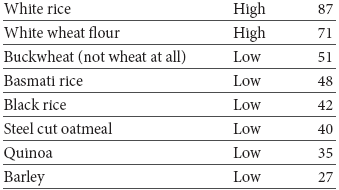
The Sugar Epidemic
When it comes to nutrition, the statistics are frightening. According to the Centre for Disease Control (CDC) in the United States, as of 2007-2008, 68% of the population was either overweight or obese in a roughly equal mix of male and female. By some estimates, this has currently increased to 74%.
Thirty-four percent of the population being obese is a medical disaster. It’s no wonder that 20% of American adults have metabolic syndrome. This leaps to 40% of the population between 60 and 80. Metabolic syndrome, also called insulin resistance syndrome, increases the risk of heart disease, diabetes, and stroke.
This vicious cycle all links back to sugar. Adults consume an average of 24 teaspoonfuls of sugar daily, and teenagers consume 32 teaspoons daily on average!

And sugar isn’t the only danger food. To a great extent, high fructose corn syrup (HFCS) has replaced table sugar (sucrose) as a sweetener in processed foods, soft drinks, and cereals. HFCS is a mixture of fructose and glucose.
A 2008 study supported in part by the American Diabetes Association monitored a number of important markers, such as blood glucose, insulin and leptin levels over a 24-hour period and reported no difference in the metabolic effects of sugar and HFCS. So at best they are both equally bad!
As a doctor whose primary interest for the past 14 years has been nutrition and longevity medicine, Lee believes, without reservation, that the best thing you can do to improve both the quality and quantity of your life, is to eliminate HFCS and reduce the amount of sugar to as close to zero as possible.

So if no sugar, what’s the alternative? Artificial sweeteners are most definitely not the answer - nobody knows exactly what those chemicals are doing to your body but let’s just assume they’re not supposed to be there.
Fortunately, there are some healthy natural substitutes for sugar, most notable stevia and xylitol.
Stevia
Stevia comes from the leaves of a South American plant in the sunflower family. It is up to 300 times sweeter than sugar (a little goes a long way) and has virtually no effect on blood sugar, making it an ideal sugar substitute. Stevia has been used in Japan for many years, and is commonly found in packets at restaurants.
Only one hitch: Stevia can have a distinctive after-taste resembling a cross between licorice and molasses, which can be off-putting. Some forms, such as the clear liquid, have less after-taste than the dark extracts.
Xylitol
Despite its horrible sci-fi name, xylitol looks and tastes almost exactly like sugar, but has two-thirds the calories and a GI of only 8 (compared to 100 for glucose, remember). Categorized as a sugar alcohol, xylitol enters the blood stream at a much slower rate than glucose. Originally obtained from the inside of the bark of a birch tree in Finland, xylitol is now extracted from readily obtainable fibrous plants, such as berries, rice and corn.
As well as allowing you to take sugar out of your diet, xylitol protects against tooth decay and may help to increase bone density. But most importantly, it will help you control your weight and does not lead to insulin resistance or contribute to inflammation.
The only known side effect is that using too much can have a laxative effect. For this reason, use as little as possible to obtain the desired level of sweetness – about half as much xylitol as the amount of sugar called for in a recipe. Xylitol is available at most health food shops.
A word about diets
Between crash diets and fad diets it’s fairly easy to lose weight, but even easier to put it back on again. The people who know most about weight loss will tell you that you need to make permanent changes to your eating habits and that requires a program that’s sustainable – not for weeks or years, but for the rest of your life.
One of the main advantages of eating thoughtful, functional food is that, not only will you lose weight if you eat this way, but you will also be able to maintain your new trimmer look almost effortlessly.
Change your eating habits and do a little exercise and your weight problems will dissolve. And that too will combine with the better food that you’re eating to help you look better and feel more alive for longer.
At the Split Apple Retreat, guests marvel at the copious amounts of great tasting food they can eat and still lose weight. The secret is that we prepare low GI foods which means they don’t crave snacks between meals.
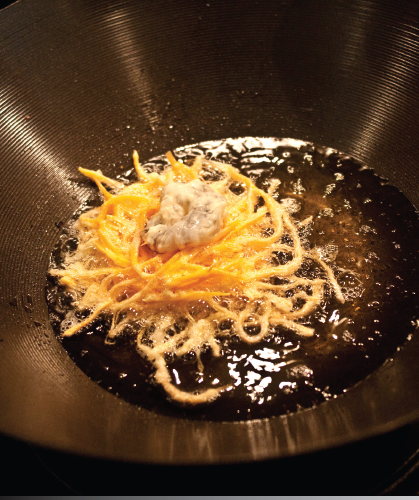
Three keys to long-term weight loss:
Eat low glycemic index foods as presented in this cookbook. This will reduce cravings by stabilising your blood sugar.
Exercise regularly, especially before breakfast. A recent study reported in The Journal of Physiology demonstrated that exercising before breakfast combated the detrimental effects of eating a high fat, high calorie breakfast and helped keep weight off.
Drink green tea throughout the day. This will help reduce your appetite while providing a raft of positive health benefits, such as decreasing LDL cholesterol and triglycerides, and reducing inflammation.

Coffee, chocolate and red wine – vices or virtues?
Probably no three foods generate more controversy than the hedonistic triumvirate of coffee, chocolate and red wine. Whereas in prior years these items have been associated with overindulgence and negative effects, now these same no-no’s are being acclaimed for a variety of positive health benefits.
To be fair, each of these foods do, indeed, still have potential for causing problems but consumed in the right amounts, they can each make significant contributions to wellness. Let’s take a look at each one.
Chocolate
Chocolate is a low glycemic index, highly nutritious food that lowers blood pressure and is good for your heart, but here’s the rub; only dark chocolate (with a minimum of 70% cocoa) is healthy. The more commonly consumed milk chocolate is loaded with milk, sugar, and calories and should be avoided.
In fact, if it were not for the fact that 100 grams has about 400 calories, chocolate would be right up there with pomegranates, blueberries, wild salmon, and green tea as a super food.
If you can afford to consume the calories - you’re exercising enough or eating a balanced diet - 50 to 100 grams of chocolate daily will help lower your blood pressure and your LDL cholesterol level.

In fact, a September 2009 Swedish study reported in the Journal of Internal Medicine showed that heart attack survivors who ate dark chocolate at least twice a week decreased their chances of dying from a heart attack by an astounding 300%!
Athletes may be able to reduce their recovery time after exercise by eating dark chocolate as it lowers the level of an enzyme called creatinine kinase which is associated with muscle damage.
Chocolate has also been associated with a decreased incidence of stroke. In a study of 44,000 people, a weekly serving of chocolate reduced the risk of stroke by 22%.
Dark chocolate may also delay the decline in mental functioning associated with ageing.
But don’t kid yourself – milk chocolate isn’t half right, it’s all wrong! Dark chocolate with at least 70% cocoa is the only way to go.
Even if you find it too bitter at first, you can train yourself to like it. Munch away, or incorporate into recipes as we have done in this book.
Coffee
Coffee was once thought to be detrimental due to increases in blood pressure, nervousness, loss of sleep and heart palpitations in those who either drink too much, or are sensitive to the stimulating effects of caffeine, but recent studies cast coffee in a more beneficial light.
Here are some of the surprising recently reported study results:
A Scandinavian study followed 1409 people in their 50s over two decades and found that moderate coffee consumption (3-5 cups per day) reduced the risk of Altheimer’s disease later in life by 60%.
The Journal of the National Cancer Institute reported in May 2011 that men who drank six or more cups of coffee daily had a 60% lower risk of lethal prostate cancers than men who didn’t drink coffee. This Harvard Medical School study followed 48,000 health professionals over a 20-year period. Interestingly, it made no difference if the men consumed caffeinated or decaffeinated coffee, indicating that this anti-cancer effect was due to molecules in coffee, quite separate from caffeine.

Other recently reported benefits of coffee include:
-A decreased risk of Parkinson’s disease
-A decreased risk of gallstones
-Increased cognitive performance
-A decreased risk of diabetes
-A decreased risk of certain cancers
Even the association of coffee with increased blood pressure has recently been called into question. A 12-year study of 155,000 female nurses did not show that coffee consumption significantly increased blood pressure.
Make no mistake, coffee - caffeinated or decaffeinated - should be consumed as part of a healthy diet. Just don’t load up with gallons of frothy milk and tonnes of sugar if you want to get any real overall benefit.
Red Wine
Recent medical research points to this inevitable conclusion: moderate consumption of alcoholic beverages, most notably red wine, is associated with a longer, healthier life than abstinence from alcohol.
With red wine, it appears as though roughly half the health benefits come from its alcoholic content and the other half from antioxidants, such as resveratrol, which may “turn on” genes associated with longevity.
The key phrase here is moderate consumption. More than a couple of daily glasses of red wine may kill off brain cells and put a strain on the liver. As we all know, alcohol consumption can be addictive so controlling intake is of paramount importance.
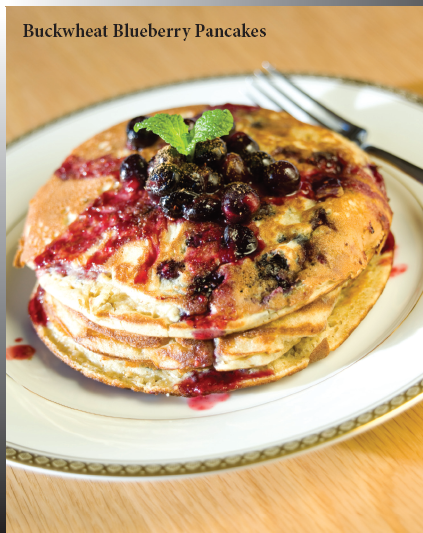
Here are some of the health benefits of moderate red wine consumption:
-Reduces the risk of atherosclerotic heart disease
-Reduces the risk of ischemic strokes
-Reduces the risk of breast and prostate cancer
-Lowers LDL cholesterol
-Decreases inflammation
-May help with sleep, since it contains melatonin
-Resveratrol may increase lifespan

Pomegranates - The True Superfood
The term “superfood” may have been overused and diluted - every year there’s a new one in the headlines - but pomegranates, blueberries, wild salmon, and green tea have health benefits that put them way ahead of the field. In fact, according to researchers at the UCLA medical centre, pomegranate juice is the healthiest juice on earth.
Hardened arteries
Pomegranates contain powerful antioxidants that have been shown not to just stop your arteries clogging but to actually help clean them out.
In a study done at UCLA, a daily glass of pomegranate juice was found both to stop the arterial thickening of the arteries of the heart and the carotid arteries that service the brain, and to actually decrease the thickness of the arterial walls, increasing blood flow through the arteries.
Blood pressure
Antioxidants in pomegranate juice also reduce blood pressure. It has now been shown that it does this by reducing the angiotensin-converting enzyme (ACE), an enzyme that increases blood pressure. Pomegranate has been shown to decrease ACE levels by 36%, lowering blood pressure by 5-10%.
Inflammation
Pomegranates also have three times the antioxidants of red wine and green tea and have anti-inflammatory effects. They contain catechins (found in green tea), isoflavones (found in soy) and ellagic acid (found in strawberries and raspberries), all of which are believed to play a role in helping kill cancer cells.
Prostate Cancer
In men with prostate cancer who had a recurrence after primary treatment with either surgery or radiation, a daily glass of pomegranate juice dramatically slowed the rise in PSA, a marker used for determining cancer activity. In a group of 50 men studied at UCLA who had an average PSA doubling time of 1.25 years, daily pomegranate juice slowed the time it took the PSA to double to an amazing 4.5 years!
Cholesterol
Pomegranate juice has a cholesterol-lowering effect and has been shown to reduce LDL cholesterol oxidation. Oxidized LDLs are deposited on arterial walls so this is one of the ways pomegranates reduce plaque formation. Reducing fatty deposits helps to prevent heart attacks, strokes, premature aging, Alzheimer’s disease and cancer.
An enzyme that increases HDLs, the body’s “good” cholesterol (paraoxonase1), and reduces LDL oxidation was increased by 83% after 1 year of a daily glass of pomegranate juice.
Oxygen deprivation
In animal studies, pomegranates and blueberries were found to have a protective effect on the brain when oxygen was reduced. Blueberries are known for this, but pomegranates are nearly twice as effective.
That’s six good reasons why pomegranates are a dietary must – a true superfood. Put pomegranate juice on your shopping list now.
Our Key to your Health and Wellness
Throughout the Split Apple Cookbook you will find symbols in each recipe. These represent the health benefits found in the ingredients.
| Symbol | Health Benefit |
| AO | Anti-oxidant |
| AI | Anti-inflammatory |
| AC | Anti-cancer |
| BP | Reduces blood pressure |
| IS | Reduces insulin resistance |
| M | Improves memory |
| LDL | Reduces LDL cholesterol |
| HDL | Increases HDL cholesterol |
| HF | Heart Friendly |
| IMM | Immune system booster |
